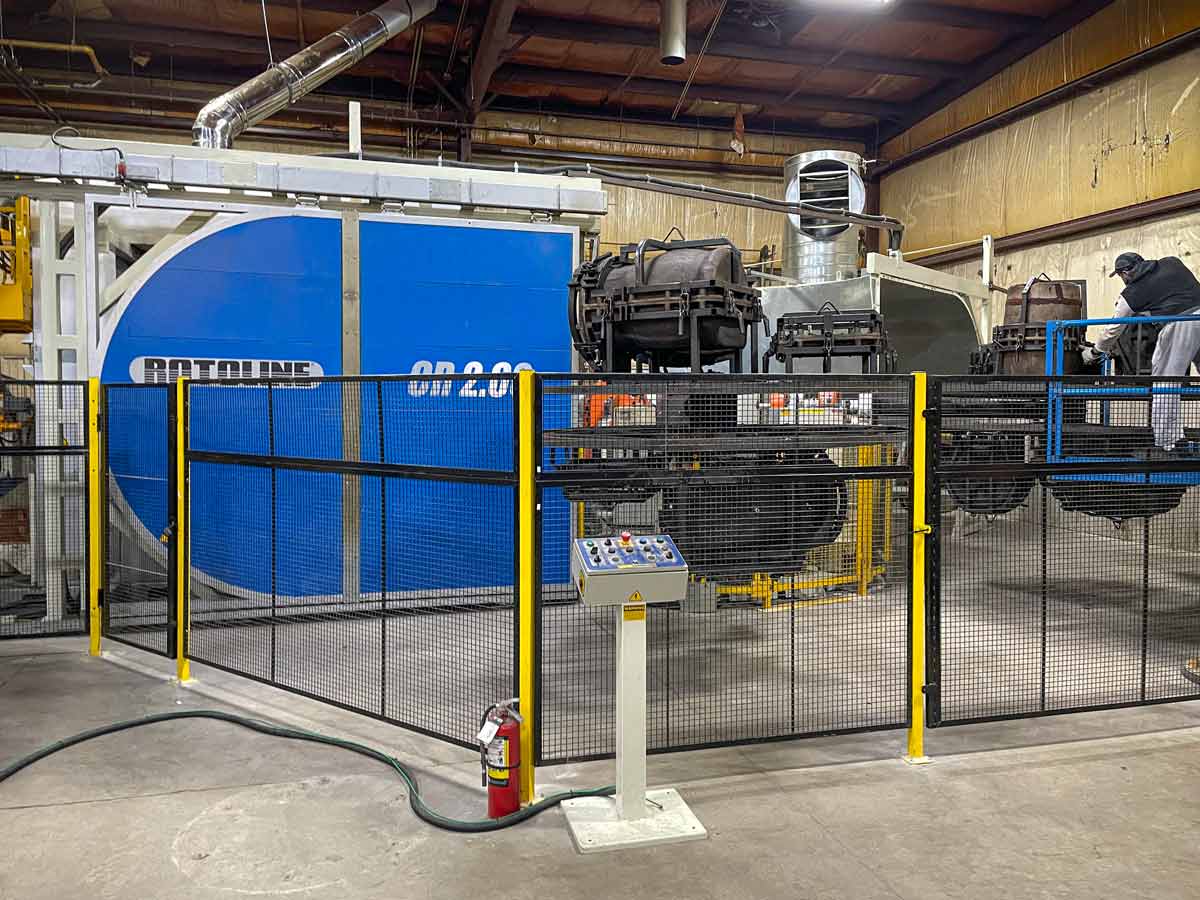Introduction:
Rotomolding, also known as rotational molding, is a versatile manufacturing process used to produce hollow plastic products of various shapes and sizes. This article provides a comprehensive guide to rotomolding, exploring its advantages, the process itself, and its applications across different industries. Whether you’re new to rotomolding or seeking to deepen your understanding, this guide will equip you with the knowledge needed to appreciate the potential of this innovative manufacturing technique.
What is Rotomolding?
Rotomolding is a manufacturing process that involves creating hollow plastic products by rotating a mold in multiple axes while it is heated and filled with plastic resin. The centrifugal force generated during rotation evenly coats the interior surface of the mold, resulting in consistent thickness and quality throughout the product. Rotomolding is suitable for both small and large-scale production and can create complex, seamless, and durable products.
The Advantages of Rotomolding:
Rotomolding offers several advantages over other manufacturing processes. Firstly, it allows for the production of large, hollow products without the need for expensive tooling or complex molds. The molds used in rotomolding are typically less expensive compared to injection or blow molding. Additionally, rotomolding offers design flexibility, enabling the creation of complex shapes, multi-layered products, and intricate details. The process is also highly efficient, with minimal material waste, making it a cost-effective choice. Furthermore, rotomolded products exhibit excellent strength, impact resistance, and chemical resistance.
The Rotomolding Process:
The rotomolding process involves several steps: mold preparation, loading the mold, heating and rotating the mold, and cooling and demolding. Mold preparation begins by selecting or creating a mold based on the desired product design. The mold is then loaded with the appropriate amount of powdered or liquid plastic resin. The mold is sealed, and the heating and rotation phase begins. The mold is heated, and as it rotates, the plastic resin melts and coats the interior surface of the mold. The mold is then cooled to solidify the plastic, and the final step involves opening the mold and removing the finished product.
Rotomolding Materials:
Various materials can be used in rotomolding, depending on the desired properties of the end product. The most common material is polyethylene (PE), known for its durability, chemical resistance, and UV stability. Polypropylene (PP) is also frequently used, offering good impact strength and temperature resistance. PVC (Polyvinyl Chloride) is another material choice, providing excellent flame resistance and electrical insulation properties. Nylon (Polyamide) is suitable for applications requiring high strength and dimensional stability. Specialty materials such as cross-linked polyethylene (XLPE) or biodegradable resins are also available for specific applications.
Design Considerations for Rotomolding:
Designing for rotomolding requires specific considerations to ensure successful and efficient production. Wall thickness is a crucial factor, as uniform thickness distribution promotes even heating and cooling, reducing the risk of warping or defects. Adding ribs and reinforcements can increase structural integrity, especially for larger products. Incorporating draft angles facilitates the removal of the product from the mold. Inserts and metal parts can be integrated into the mold for additional functionality. Surface finishes, such as textures or logos, can be applied to enhance the aesthetic appeal of the final product.
Applications of Rotomolding:
Rotomolding finds applications across various industries due to its versatility and design flexibility. In the automotive and transportation sector, rotomolded products include fuel tanks, air ducts, and interior components. Industrial storage and material handling solutions, such as containers, bins, and pallets, are commonly produced using rotomolding. Water and chemical tanks, widely used in agriculture, water treatment, and industrial applications, benefit from the rotomolding process due to their durability and resistance to chemicals. Playground equipment, toys, furniture, outdoor products, medical devices, and healthcare products are other areas where rotomolding is extensively utilized.
Comparing Rotomolding with Other Manufacturing Processes:
While rotomolding has its advantages, it is essential to consider how it compares to other manufacturing processes. Injection molding offers high production speeds and intricate details but may be cost-prohibitive for larger products. Blow molding is suitable for hollow products with a consistent wall thickness but may be limited in design complexity. Thermoforming is a cost-effective process for producing large, flat products but may not be suitable for complex shapes. Each process has its strengths and limitations, and the choice depends on the specific requirements of the product.
Environmental Sustainability in Rotomolding:
Rotomolding can be a sustainable manufacturing option due to its minimal material waste, recyclability of plastics, and the use of eco-friendly resins. Many rotomolding manufacturers incorporate recycled materials into their production process, reducing the environmental impact. Additionally, the durability and longevity of rotomolded products contribute to reducing waste over time.
Future Trends and Innovations in Rotomolding:
The rotomolding industry is continuously evolving, with advancements in materials, automation, and process efficiency. Innovations in biodegradable resins, nanocomposites, and lightweight materials are expanding the possibilities for sustainable and high-performance rotomolded products. Automation technologies, such as robotic arm systems, are improving production speed and precision. Digital simulation tools are aiding in the design and optimization of rotomolded products, reducing time and cost.
Conclusion:
Rotomolding is a versatile manufacturing process that offers numerous advantages, including design flexibility, cost-effectiveness, and durability. Its applications span across various industries, producing a wide range of hollow plastic products. By understanding the rotomolding process, materials, and design considerations, manufacturers can harness the full potential of this innovative technique. As the industry continues to evolve, incorporating sustainability and technological advancements, rotomolding remains a valuable manufacturing solution for both small and large-scale production.




Leave a Reply
Want to join the discussion?Feel free to contribute!